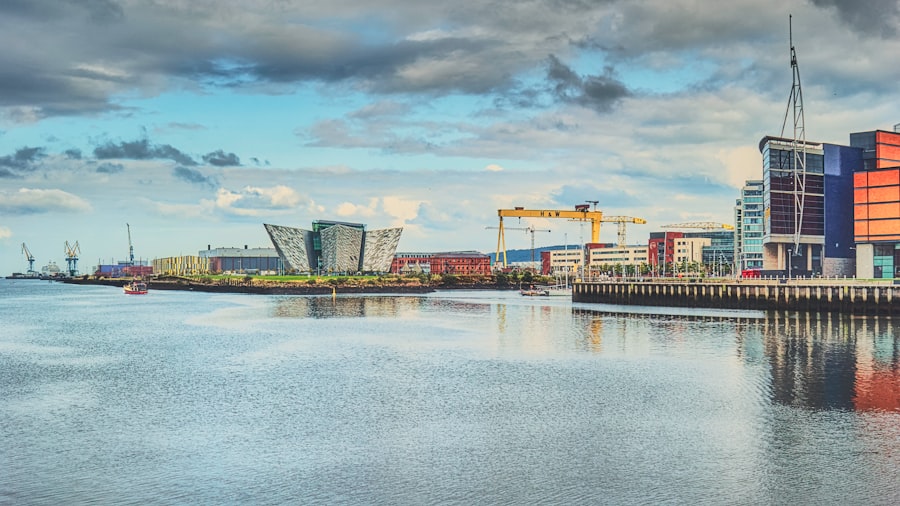The Drake Passage, a narrow stretch of water located between the southern tip of South America and Antarctica, is renowned for its tumultuous seas and unpredictable weather. This maritime corridor, measuring approximately 600 miles in width, serves as a critical link for vessels traversing the Southern Ocean. However, its reputation as one of the most dangerous sea routes in the world is well-deserved.
The confluence of the Atlantic and Pacific Oceans creates a unique set of conditions that can lead to violent storms, towering waves, and fierce currents. Mariners have long regarded the Drake Passage with a mix of awe and trepidation, understanding that navigating its waters requires not only skill but also a deep respect for nature’s fury. The passage is often characterized by its relentless winds, which can reach speeds of over 60 knots, and waves that can soar to heights of 30 feet or more.
These conditions are exacerbated by the region’s geographical features, including the presence of the Antarctic Circumpolar Current, which flows unimpeded around the continent of Antarctica. This current contributes to the choppy waters and sudden weather changes that can catch even the most experienced sailors off guard. As a result, the Drake Passage has become synonymous with peril, earning it the moniker “the most dangerous sea in the world.” For those who dare to traverse its waters, the passage offers both a formidable challenge and an opportunity for adventure.
Key Takeaways
- The Drake Passage is a treacherous sea route known for its unpredictable and dangerous conditions.
- The Titanic’s ill-fated journey through the Drake Passage resulted in a fatal mistake that contributed to its sinking.
- The history of the Drake Passage is marked by a notorious reputation for challenging even the most experienced sailors.
- Navigating the Drake Passage presents numerous challenges, including extreme weather and strong currents.
- The legacy of the Titanic’s journey through the Drake Passage serves as a reminder of the dangers and risks associated with this route.
The Titanic’s Ill-Fated Journey through the Drake Passage
The RMS Titanic, a marvel of early 20th-century engineering, embarked on its maiden voyage in April 1912, destined for New York City from Southampton, England. While the ship’s route did not directly traverse the Drake Passage, it was nonetheless influenced by the treacherous waters surrounding it. The Titanic’s journey was marked by an air of confidence and luxury, with passengers indulging in opulence aboard the “unsinkable” vessel.
However, unbeknownst to them, the very waters that promised adventure were fraught with danger. The Titanic’s ill-fated journey serves as a poignant reminder of humanity’s hubris in the face of nature’s might. As the Titanic sailed across the North Atlantic, it encountered various weather patterns that were influenced by the conditions in the Drake Passage.
The ship’s crew faced challenges in navigation due to shifting winds and unpredictable currents. Despite receiving multiple iceberg warnings from other vessels in the area, the Titanic continued on its course at full speed. This decision would ultimately prove catastrophic.
The ship’s encounter with an iceberg on April 14, 1912, led to its tragic sinking just hours later, claiming over 1,500 lives.
The History of the Drake Passage and its Notorious Reputation

The history of the Drake Passage is steeped in tales of exploration and maritime peril. Named after Sir Francis Drake, an English sea captain who navigated these waters in the late 16th century, the passage has long been a focal point for adventurers seeking to explore the southern reaches of the globe. Early explorers faced immense challenges as they attempted to chart these treacherous waters, often encountering fierce storms and unpredictable weather patterns that tested their resolve.
Over time, these experiences contributed to the passage’s notorious reputation as a graveyard for ships. Throughout history, numerous vessels have met their demise in the Drake Passage, further solidifying its fearsome status among sailors. From whaling ships to modern research vessels, many have succumbed to the violent forces of nature that characterize this region.
The passage has become a symbol of both human ambition and vulnerability, illustrating how even the most advanced technology can be rendered powerless against nature’s wrath. As maritime navigation evolved over the centuries, so too did the understanding of the Drake Passage’s dangers, leading to improved safety measures and navigational techniques.
The Titanic’s Encounter with the Drake Passage: A Fatal Mistake
| Metrics | Data |
|---|---|
| Ship Name | The Titanic |
| Location | Drake Passage |
| Event | Encounter with the Drake Passage |
| Outcome | Fatal Mistake |
While the Titanic did not directly navigate through the Drake Passage during its ill-fated voyage, its journey was nonetheless influenced by conditions prevalent in this perilous sea route. The ship’s captain, Edward Smith, faced numerous challenges as he steered through icy waters known for their treachery. The decision to maintain high speeds despite receiving iceberg warnings was a critical error that would ultimately seal the ship’s fate.
The icy waters surrounding the Drake Passage served as a stark reminder of nature’s unpredictability and power. The Titanic’s encounter with an iceberg on that fateful night was not merely a result of bad luck; it was also indicative of a broader pattern of overconfidence in maritime navigation during that era. The ship’s crew had been trained to handle various challenges at sea but were ill-prepared for the unique dangers posed by icebergs in these frigid waters.
As they sailed through an area known for its ice fields, they failed to heed warnings from other vessels about potential hazards ahead. This fatal mistake would lead to one of history’s most infamous maritime disasters.
The Challenges of Navigating the Drake Passage
Navigating the Drake Passage presents a myriad of challenges that test even the most seasoned mariners. The unpredictable weather patterns can shift rapidly, transforming calm seas into raging tempests within minutes. Sailors must remain vigilant and adaptable, constantly monitoring changing conditions while making critical decisions about their course and speed.
The presence of icebergs and floating debris adds another layer of complexity to navigation in this region, requiring careful planning and execution. In addition to natural obstacles, navigators must also contend with limited visibility due to fog and storms that frequently envelop the passage. These factors can obscure potential hazards and make it difficult to assess safe routes through treacherous waters.
Furthermore, strong currents can create dangerous whirlpools and eddies that threaten to capsize vessels caught off guard. As such, navigating the Drake Passage demands not only technical skill but also an intimate understanding of maritime conditions and an unwavering respect for nature’s power.
The Impact of the Drake Passage on the Titanic’s Sinking

While the Titanic did not sail directly through the Drake Passage during its ill-fated voyage, its journey was nonetheless influenced by conditions prevalent in this perilous sea route. The icy waters surrounding Antarctica posed significant risks for ships navigating nearby routes. On April 14, 1912, as the Titanic sailed through these frigid waters, it encountered an iceberg that would ultimately lead to its tragic sinking.
The impact of this encounter was exacerbated by factors such as high speeds and inadequate response time from the crew. The sinking of the Titanic serves as a stark reminder of how environmental conditions can dramatically alter a vessel’s fate. Had Captain Smith heeded iceberg warnings or adjusted his course to account for potential hazards in nearby waters influenced by the Drake Passage, history may have unfolded differently.
Instead, over 1,500 lives were lost in one of maritime history’s most devastating disasters—a tragedy that continues to resonate today.
Surviving the Drake Passage: Stories of Triumph and Tragedy
Despite its notorious reputation for perilous conditions, there are countless stories of survival and resilience associated with navigating the Drake Passage. Adventurers and researchers alike have braved these treacherous waters in pursuit of discovery and exploration. Some have successfully crossed this formidable sea route aboard sturdy vessels designed to withstand harsh conditions while others have faced harrowing challenges that tested their limits.
One such tale is that of a group of scientists conducting research on climate change in Antarctica. Their vessel encountered severe storms while traversing the Drake Passage but managed to navigate through turbulent seas thanks to meticulous planning and teamwork among crew members. Their successful journey not only contributed valuable data to scientific research but also highlighted human determination in overcoming nature’s challenges.
Conversely, there are also stories of tragedy that serve as cautionary tales for those who dare to navigate these waters. Numerous vessels have been lost in storms or due to collisions with icebergs—each incident leaving behind heart-wrenching accounts of loss and despair. These stories remind mariners that while triumph is possible in navigating this perilous passage, so too is tragedy—a duality that defines life at sea.
The Legacy of the Titanic’s Journey through the Drake Passage
The legacy of the Titanic extends far beyond its tragic sinking; it has left an indelible mark on maritime history and safety regulations worldwide. In light of this disaster, significant changes were implemented regarding ship design, safety protocols, and navigational practices—many influenced by lessons learned from encounters with treacherous waters like those found in the Drake Passage. The Titanic disaster prompted international discussions about maritime safety standards leading to improvements such as lifeboat requirements for all passengers aboard vessels—a direct response to shortcomings revealed during this tragedy.
Additionally, advancements in iceberg detection technology emerged as a crucial focus area for researchers seeking ways to prevent similar disasters from occurring again. As time passes since that fateful night in April 1912, memories fade but lessons endure—reminding future generations about both human ambition and vulnerability when faced with nature’s might.
The Drake Passage Today: Modern Dangers and Precautions
In contemporary times, navigating through or near the Drake Passage remains fraught with challenges despite advancements in technology and safety measures implemented since historical tragedies like that of Titanic’s sinking. Modern vessels equipped with sophisticated navigation systems still face unpredictable weather patterns that can arise suddenly—requiring crews to remain vigilant at all times. Moreover, climate change has introduced new variables into this already complex environment—altering ocean currents while increasing storm frequency and intensity within these waters.
As researchers continue studying these changes closely—mariners must adapt their strategies accordingly—balancing exploration with caution as they traverse this perilous sea route. To mitigate risks associated with navigating through or near this treacherous passage—modern shipping companies prioritize training crews extensively on emergency protocols while investing heavily into state-of-the-art equipment designed specifically for harsh marine environments—ensuring safety remains paramount even amidst uncertainty.
Lessons Learned from the Titanic’s Fate in the Drake Passage
The fate of Titanic serves as a powerful reminder about respecting nature’s power while navigating treacherous waters like those found within or near Drake Passage—highlighting critical lessons learned over time regarding maritime safety practices today still resonate strongly among sailors worldwide. One key takeaway from this tragedy is recognizing limitations inherent within human technology—no matter how advanced ships may become—they remain vulnerable against forces beyond control such as icebergs lurking beneath surface or sudden storms arising unexpectedly without warning signs beforehand. Additionally—communication plays an essential role when it comes down ensuring safety at sea—timely sharing information regarding potential hazards can mean difference between life-and-death situations during voyages across dangerous passages like those found within Drake Passage itself.
Exploring the Drake Passage: A Journey of Danger and Discovery
Exploring the Drake Passage offers adventurers an unparalleled opportunity to witness some of nature’s most awe-inspiring landscapes while simultaneously confronting its inherent dangers head-on—a duality that defines every journey undertaken within these tumultuous waters. For those willing to brave this formidable sea route—experiences abound ranging from breathtaking views of towering icebergs glistening under sunlight reflecting off their surfaces—to encounters with diverse wildlife including seals penguins whales—all thriving amidst harsh conditions unique only found here. However—each expedition comes with inherent risks requiring careful planning preparation before embarking upon such journeys—ensuring safety remains paramount throughout entire experience while embracing thrill adventure awaits just beyond horizon waiting discovery beckoning those daring enough venture forth into unknown realms beyond reach ordinary life back home.
In conclusion—the legacy left behind by both Titanic’s ill-fated voyage through nearby waters influenced by Drake Passage—and ongoing exploration undertaken today serve as powerful reminders about resilience human spirit amidst challenges faced when navigating treacherous seas filled both triumph tragedy alike—forever shaping our understanding relationship between humanity nature itself along way forward into future adventures yet unfold ahead!
The Drake Passage is a notorious stretch of water that has claimed many ships throughout history, much like the infamous Titanic disaster. An interesting article that delves into the treacherous nature of the Drake Passage and its historical significance can be found on MyGeoQuest. This article provides insights into the challenges faced by ships navigating these perilous waters, drawing parallels to the tragic fate of the Titanic. For more information, you can read the full article on the MyGeoQuest website.
WATCH NOW! Drake Passage: Earth’s Deadliest Waters Revealed
FAQs
What is the Drake Passage?
The Drake Passage is the body of water between the southern tip of South America and the northern tip of the Antarctic Peninsula. It is known for its rough seas and challenging sailing conditions.
What is the connection between the Drake Passage and the Titanic?
The Titanic, a famous British passenger liner, sank in the North Atlantic Ocean on April 15, 1912 after hitting an iceberg. The ship’s route took it through the North Atlantic, not the Drake Passage.
Why is the Drake Passage significant in relation to the Titanic?
The Drake Passage is significant in relation to the Titanic because it is often used as a comparison for rough sailing conditions. The passage is known for its strong winds and high waves, which are similar to the conditions the Titanic faced in the North Atlantic.
Did the Titanic sail through the Drake Passage?
No, the Titanic did not sail through the Drake Passage. The ship’s route took it from Southampton, England to New York City, passing through the North Atlantic Ocean.
Is the Drake Passage still a challenging route for ships today?
Yes, the Drake Passage is still considered a challenging route for ships today. The strong winds and high waves make it a difficult passage to navigate, and it is often used by sailors and explorers as a test of their seamanship.
